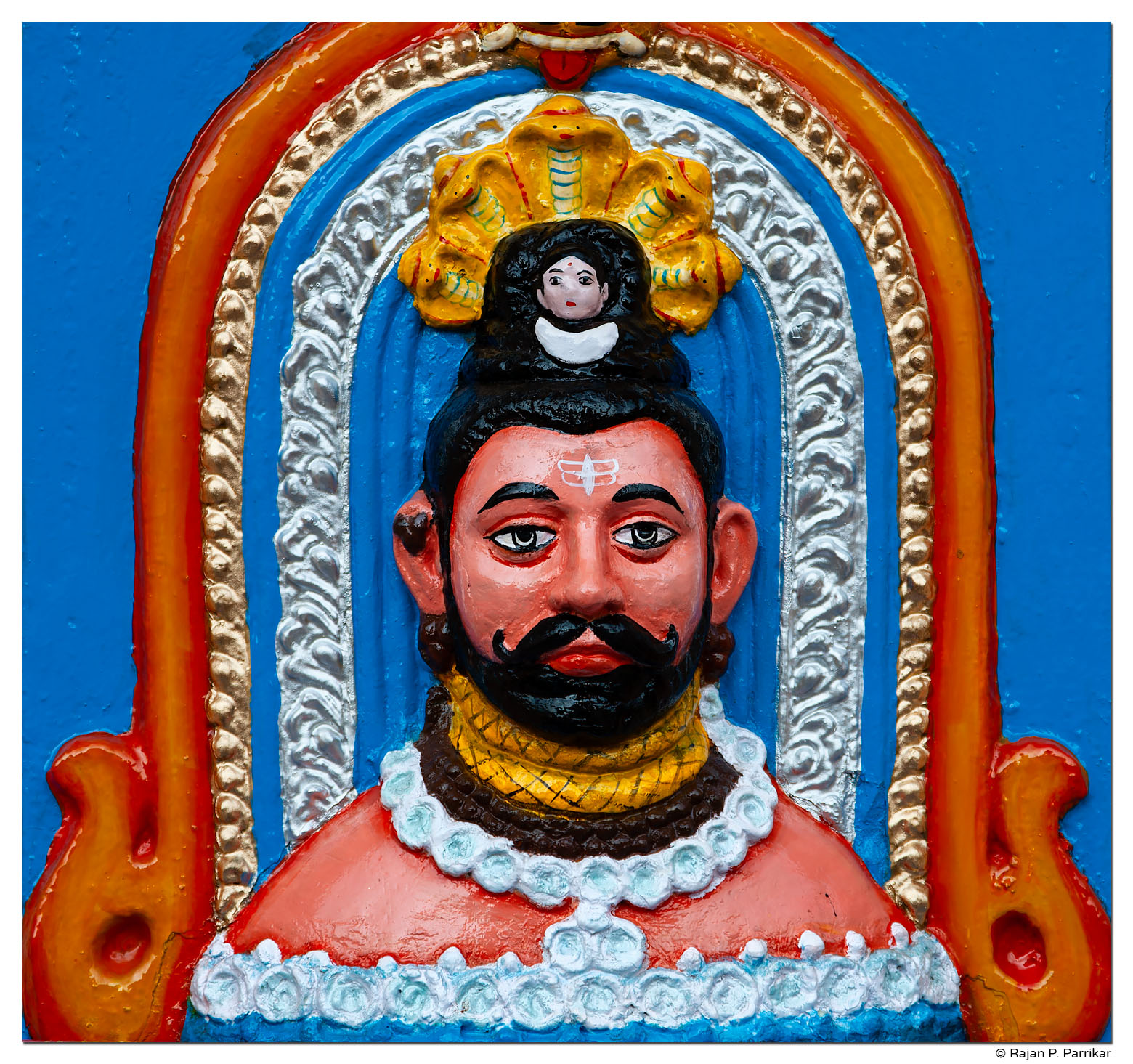Har Har Mahadeva!
Mahashivaratri will be celebrated tonight all over India, Nepal, Sri Lanka, as well in enclaves of Shaivite influence around the world (eg. Bali, Vietnam, Mauritius).
This yearly shindig is a tribute to Lord Shiva, the Supreme Yogi & Ascetic, Nataraja, Eternal Guru, and Transcendent Kook, to cite a few of His manifold forms. Given His wild temperament it is only natural that Mahadeva is BFF with a ragtag bunch of bums, crazies, and oddballs. Together they gather in the stillness of their favourite haunt, the cremation grounds, where the Lord is often found transfixed in meditation.
I came across this freshly painted relief of the Lord’s visage in 2006 at the Nageshi Temple in Goa.

Lord Shiva – Nageshi, Goa
5D, 24-105L
In the Mahabharata, Lord Shiva says to Uma that the cremation ground is dearest to Him: “…I do not find a place more sacred than the cremation ground… shaded by banyan trees, the branches adorned with torn garlands… the many ghostly beings that are my companions love this place…”
(MBh. anuśāsanaparva 128. 16-20; BORI Cr. Ed.)
The following verse, translated from the original Tamil, indicates this was a pan-Indic belief in early India. The verse was composed by Karaikkal Ammaiyar (ca. 5th CE).
a ghost shrieks –
snarls and points its finger;
flinging a pyre at the prone corpse,
it runs away.
Others flee in fear,
beating their sunken stomachs
with their hands.
Like a mad man
dances our Lord.
The verse is from a Shaivite hymn titled mootta tiruppatikam (lit. oldest hymn). As the name implies, it is one of the oldest hymns that comprise the corpus of the Tamil Shaivite tradition. It sings the praise of Lord Shiva who dances in the cremation grounds of Tiruvālaṅkāṭu, a town 80 km west of modern day Chennai. In Tamil, the words ālam and kāṭu mean “banyan (tree)” and “forest,” respectively. The word “kāṭu” could also refer to the cremation grounds – as it does in this hymn.
There is yet another connection between Shiva, the banyan tree, and death. As a guru, Lord Shiva sits as dakṣiṇāmūrti – the One facing South under a banyan tree. Hindus believe that the world of the forefathers (pitṛlokaḥ) is in the South. Lord Shiva instructs His disciples on the Truth which would liberate them from the cycle of birth and death.
To conclude, an exquisite recitation of Adi Shankaracharya‘s Dakshinamurti Stotram by the sisters Ranjani-Gayatri.





Really a fantastic composition Rajan! The colors so vibrant! The lighting perfect. The beliefs of the different religions of the World all have 1 factor in common, a “Supreme Being”. One who instills in the human being that to follow the path of good and righteousness and you will be rewarded.
My hands involuntarily folded themselves in a ‘Namaskar’ on seeing the photograph of Shri Nagesh. Om Namah Shivay! 🙏
Kritika & Antonio-bab: thanks.
The recitation of Adi Shankaracharya was indeed exquisite, Very soothing. Although I did not understand the words (i assume it is Sanskrit) the pronunciation was of supreme quality and the the legends at the foot of the screen, most helpful . On the other hand, i must confess, that the haute relief and the painting of Lord Shiva at Nageshi temple appears to have been done rather in a hurry. Thank you Rajan-bab
Fabulous!